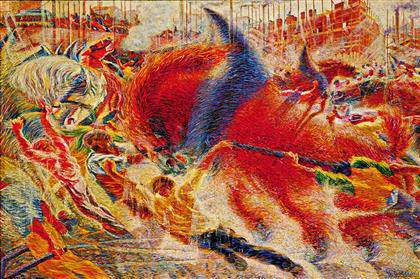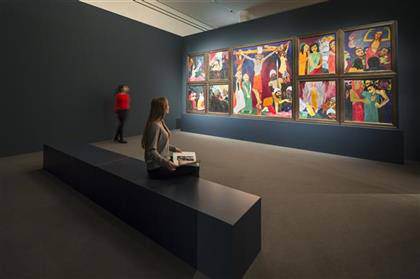
Christopher Wool
Apocalypse Now (1988)
This work was sold for $26.4 million at Christie’s, November 2013
Christopher Wool retrospective – Art Institute Chicago The Art Institute of Chicago presents a major retrospective of Chicago-born-and-raised artist Christopher Wool. February 23 through May 11, 2014.]]>
Source: Art Institute of Chicago
Reconciling the painterly bravura of Abstract Expressionismwith the use of language and other technologies such assilkscreen of other late 20th-century traditions like Pop Artand Conceptual Art, all on one surface, has madeChristopher Wool one of the most respected and influentialpainters of his generation.
Approximately 90 paintings, photographs, and works onpaper will extend far beyond his iconic word paintings toexplore developments from across the artist’s career, including appropriation of patterns and textto more recent works that utilize collage, erasure, and digital manipulation. The Art Institute is thefinal venue of the exhibition, which premiered at the Solomon R. Guggenheim Museum, NewYork. Works unique to the Art Institute’s presentation include several drawn from the museum’spermanent collection as well as the painting “Apocalypse Now” (1988), recognizable for its use ofwords from the Francis Ford Coppola film of the same name. Visitors to the exhibition will notethe innovative non-didactic, non-linear presentation specific to its Chicago showing.
Christopher Wool (b. 1955) was born and raised inChicago and moved to New York City when he turned 18.Downtown New York at the time, filled with the anarchicenergy of the punk and No Wave scenes, was a defininginfluence on his creative development; his works from the1980s are often stark, monochrome compositions formedwith commercial tools and imagery plucked from massculture. Wool’s oft-recognized stenciled “word paintings”with letter elisions, such as “Trouble” (1989), create formfrom language. The same tensions between order and disorder animate Wool’s pieces from the 1990s, often utilizingsilkscreen as a tool. The harsh urban environment of alienation and blight and its visuallanguage—overpainting, graffiti-like scrawls, and cartoonish forms like bouquets of spray-paintedflowers—show Wool’s dialogue with the tumultuous city outside his studio, a point emphaticallyillustrated in works such as “Maggie’s Brain” (1995). The artist’s photographs, often in black and whiteand small in scale, indicate a deliberate degradation in subject and in process, referencingWool’s painting practice and the experience of the urban street.
Related content
Art and Appetite – Exhibition at the Art Institute of Chicago (2013-2014)
Follow us on:


